Two great tastes, taste great together! I love the first two Alien movies (the next ones have . . . issues) and I love roleplaying games. When I learned about the Alien Roleplaying Game, I had to learn more about it!
The Alien Roleplaying Game mixes together the claustrophobic feeling of the Alien movies with an intuitive rules system. As the tension of the scenario rises, your characters can increase their chances of success. But it also increases their chance of panicking, which is when the fun begins.
Alien, the Roleplaying Game, does more than recreate the scenarios presented in the movies. It also establishes the larger universe (pun intended) operating as the backdrop of the Alien movies. This world-building allows you to run longer campaigns, where you’re the crew of a vessel or a squad of Marines. Or maybe your a team of scientists and operatives trying to stop the weaponization of the xenomorphs.
Conflict Resolution, aka Rules System, aka How Do I Keep that Face Hugger Off of Me?
When creating characters, it is important to understand the rules on conflict resolution. In other words, what does it mean for my character to be competent? Is that even possible at first level? This means you’re creating within that context. It also means there will be less fiddling with your character after your first session. Or it means you’ll make a better 2nd character after that incident with the face hugger!

Alien uses a dice pool mechanic, with six-sided dice. Your dice pool is a combination of your ranks in an attribute and skill. Each skill is linked to a specific attribute, but there is no reason why you couldn’t use another one if that’s better for the situation. There are four attributes and twelve skills. Your ranks in each can range from 0 to 5.
This means that in “normal” situations your maximum dice pool is ten (10) six-sided die. It is recommended that those ten six-siders all be the same color. This is because of the Stress mechanic.
Stress
If you fail a role, but you really want to succeed, you can re-roll. But when you reroll, your Stress Level goes up by one and you add a Stress Die to your pool. This increases your chance of success, but you can only do this once per check. But that’s not all, if you roll a one (1) on any of your Stress Dice, your character has the chance of panicking. Therefore, it is recommended that the Stress Dice be a different color than your regular dice.
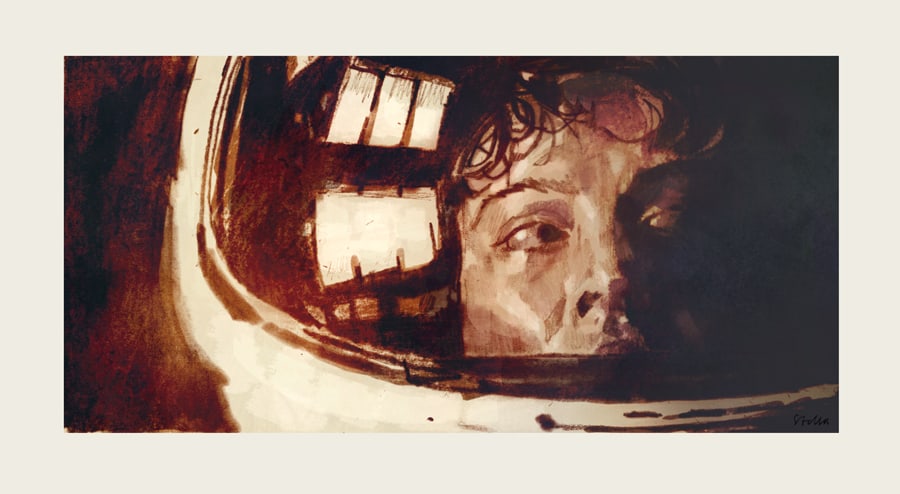
When you increase your Stress Level, that is persistent until your character has an opportunity to rest or take some other action to decrease their stress. This means until your stress level returns to zero, you’re adding at least one Stress Die to all future skill rolls. Generally, that is a ratchet upwards as the danger increases, with a very slow release.
There are three primary ways to relieve Stress:
- Spending 10 minutes resting in a secure (to your knowledge) location, making no rolls, will reduce your Stress Level by 1.
- Certain medications can also relax you, reducing your Stress Level
- Once per Act in Cinematic play (one-shot) or once per Session in Campaign play (on-going game) interacting with your Signature Item (more on that later) will reduce your Stress Level by 1.
But its important to note there is no maximum Stress Level. You can keep adding Stress Die after Stress Die.
Don’t Panic
When (not If) you roll a one on your Stress Die, you must make a Panic Check. You’re also not allowed to push (re-roll and add another Stress Die) your skill check. Other events that make provoke a Panic Check are:
- Watching another friendly character (Player Character or Non-Player Character) suffering their own panic attack, because panic can spread in stressful situations.
- You are pinned down by ranged fire.
- You suffer a critical injury.
- You’re attacked by a strange alien creature you’ve never encountered before.
- You witness a truly horrifying event.

To see what happens, you roll a single d6 and add your current stress level to the die result. Compare that total to the table on page 105 of the book. If the total is between 1-6, you keep it together. But from 7 to 15+, your character loses control. That ranges from a nervous tic, dropping what is in your hands, screaming, fleeing or going catatonic. If your total is 13 or higher, then you suffer a permanent mental trauma and must roll on the table on page 101.
Succeeding Where Others Have Failed
As in other dice pool games, like Vampire the Masquerade (read more here) and Shadowrun (read even more here), you roll your pool (ranks of attribute + ranks of skill) and compare successes against a difficulty number or target number. In Alien the Roleplaying Game, successes are a six (6) on the die. You only need one success to succeed at a check. If you get extra successes, you can use those to do Stunts associated with the skill.
However, some tasks are aided by gear, situation, or help from an ally. Other times, the situation may impose penalties upon the skill check. These do not change the number of successes needed (only 1), instead they add to or subtract from the dice pool.
Making your Xenomorph Host . . . erm Character
Character creation, in the book, is broken down into ten steps, but several of those are personalizing and fleshing out character details. These have some mechanical role (such was your Signature Item), but are mostly fleshing out your character’s personality. With some of those steps combined, creating a character has the following steps:
- Choosing a career
- Spending points on Attributes
- Spending points on Skills
- Picking a career Talent
- Name and Appearance
- Deciding on your Personal Agenda, your Buddy, and your Rival
- Pick your gear (including your Signature Item).
- Rolling for Cash (Campaign Play)
Careers
In Alien, your Career choice is both mechanical and cosmetic. The main mechanical heft of your career is the Key Attribute, Key Skills, and Career Talents. During character creation, Attributes are capped at Rank 4. But you can take your Key Attribute to 5. Skills are capped at 1, but your Key Skill are capped at 3 at Character Creation. I’ll address the Talents later.
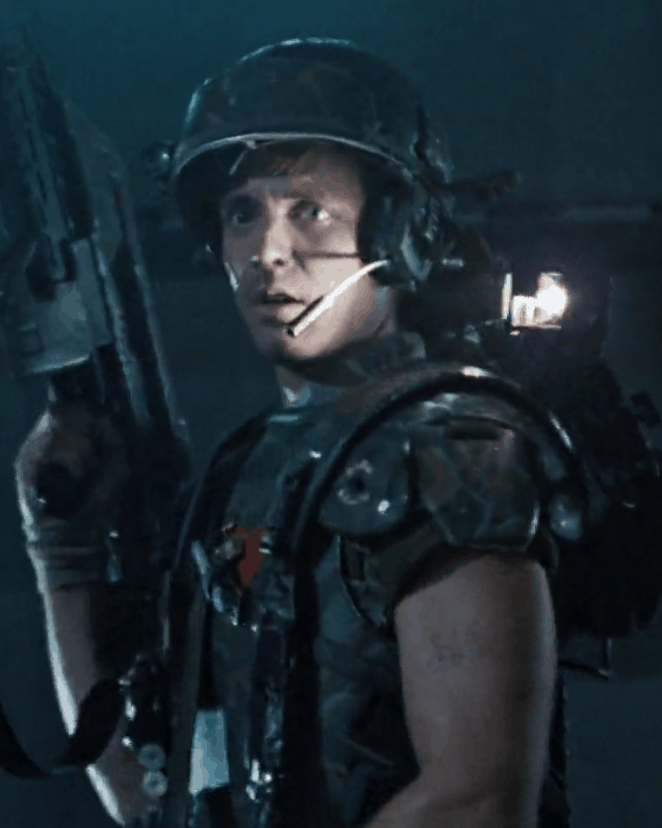
On the cosmetic front, the game suggests potential names, appearances, personal agendas, signature items, and gear. But these very short lists are merely suggestions. Only the Gear selections are required. For example, Colonial Marines pick two of the four suggested starting items. But each of the four is an either-or selection:
- M41A Pulse Rifle OR M56A2 Smart Gun
- M314 Motion Tracker OR 2 G2 Electroshock Grenades
- IRC MK.35 Pressure Suit OR M3 Personnel Armor
- Signal Flare OR Deck of cards
Whereas the Scientist picks two of the four options:
- Digital video camera OR Hand radio
- Seegson P-DAT OR Neuro visor
- Seegson System Diagnostic Device OR Personal Data Transmitter
- M314 motion tracker OR Personal medkit
There are ten different careers to chose from:
| Career | Description |
| Colonial Marine | The United States Colonial Marines specialize in defending and pacifying Outer Veil colonies. Marines are often cross-trained between combat, flight, medics, and engineers. |
| Colonial Marshall | Your job is to keep the law between the various frontier colonies. You’re not assigned to any one colony, because you’re supposed to be independent of their corporate sponsors. |
| Company Agent | Setting up settlements along the Outer Veil, installing the geo-engineering facilities, and keeping your fleet moving is an expensive proposition. Therefore, its important for corporations to have local agents to ensure their massive investments are protected. |
| Kid | You didn’t chose to go settle on a frontier colony. While your parents are working 7 days a week to help everyone stay alive, you have to keep yourself entertained. |
| Medic | Life on the frontier and traveling the space lanes is dangerous. You’re there to patch people up. You might be a Marine Medic, a ship’s doctor, or part of a colony’s medical staff. |
| Officer | You’re a ships officer, standing between your crew and your corporate customers. Or you’re a platoon’s lieutenant, making sure they are well provisioned, trained, and watching their corners. Either way, you’re in charge. |
| Pilot | Whether it’s an interstellar freighter, a dropship, or a VTOL you know how to fly it. |
| Roughneck | Like on the ocean gas derricks of Earth, you’re able to go into the harshest environments and ready to build whatever is necessary. If you’re not on-planet, then you’re crew on the interstellar freighters running the lanes. |
| Scientist | There are many mysteries out in interstellar space. You find, study and report on them. |
The Key Attributes and Skills are much as expected. For the Marines and Roughnecks its Strength. The Marines’ key skills are close combat, ranged combat, and stamina. For Roughnecks, its close combat, heavy equipment, and stamina.
Attributes
There are only four Attributes in the game: Strength, Agility, Wits, and Empathy. Strength is your raw physical strength. Agility is your bodily control and speed. Wits is your sensory perception, intelligence, and sanity. Empathy is your charisma, force of personality, and ability to motivate or manipulate others.
You have 14 points to spend, but you’re required to sink 2 points into each Attribute. They should have written that each Attribute starts at Rank 2 and you have 6 points to spend. You can only go up to Rank 5 in your Career’s Key Attribute.
Your Strength score is also your starting health score. Your Attributes cannot be increased with XP and Advancement.
Skills
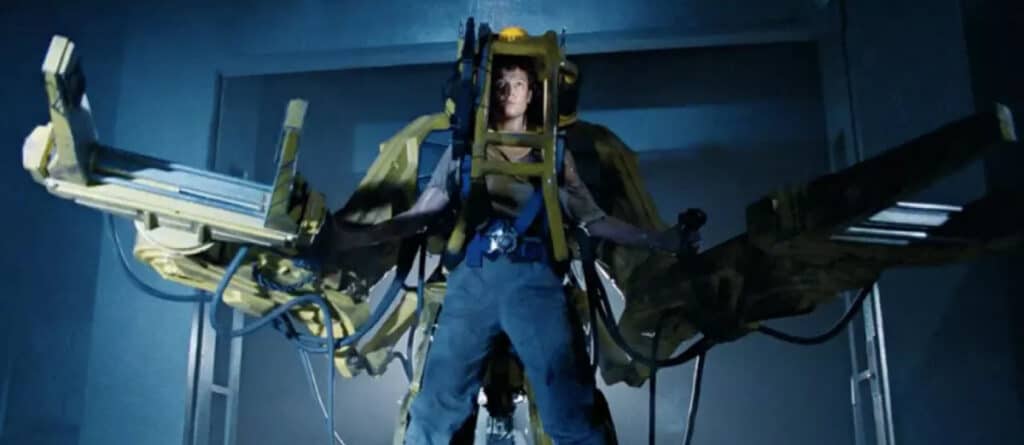
There are 12 skills and you have 10 points to spend. You can only put one point into any skill. However, you can spend up to 3 points on a Key Skill. This means that if you maximize your Key Attribute and Key Skill at character creation, you’ll have an eight (8) dice pool. But for your “off” attributes and skills, you’re looking at a 3-dice pool.
Here are the twelve different skills:
| Skill | Description |
| Heavy Machinery (Strength) | Sometimes you need to use that giant anthropomorphic loader to fight the xenomorph queen |
| Stamina (Strength) | Your ability to keep running away. |
| Close Combat (Strength) | Clubs, knives, power drills. A success means you do the weapon’s damage. You can also block Close Combat attacks. |
| Mobility (Agility) | Used to evade dangerous environments and move stealthily through an area. |
| Piloting (Agility) | Used only when there is a difficult or dangerous flying condition. Can also be used for ground-based vehicles. |
| Ranged Combat (Agility) | Firing a gun; a success means you do the damage associated with your gun. Also use this skill to take cover from enemy fire. |
| Observation (Wits) | Used to spot someone sneaking (Mobility) up on you or other hidden dangers. |
| Comtech (Wits) | Used for programming any computerized system: androids, mainframes, or other advanced technologies. Also used for communications technology. |
| Survival (Wits) | Even with geoengineering, surviving on alien worlds is tough. |
| Manipulation (Empathy) | Used to persuade or deceive others. To detect or resist is an opposed Manipulation check. |
| Medical Aid (Empathy) | Used to patch up others. If their health is zero (Broken), they regain health equal to the number of successes. If the character has a critical injury, also used to help stabilize them. |
| Command (Empathy) | When your team members are panicking around you, Command can stop it. You can also give orders to others and if they follow, they get a +1 die for each success. Officers can pull rank to compel others to take actions.. |
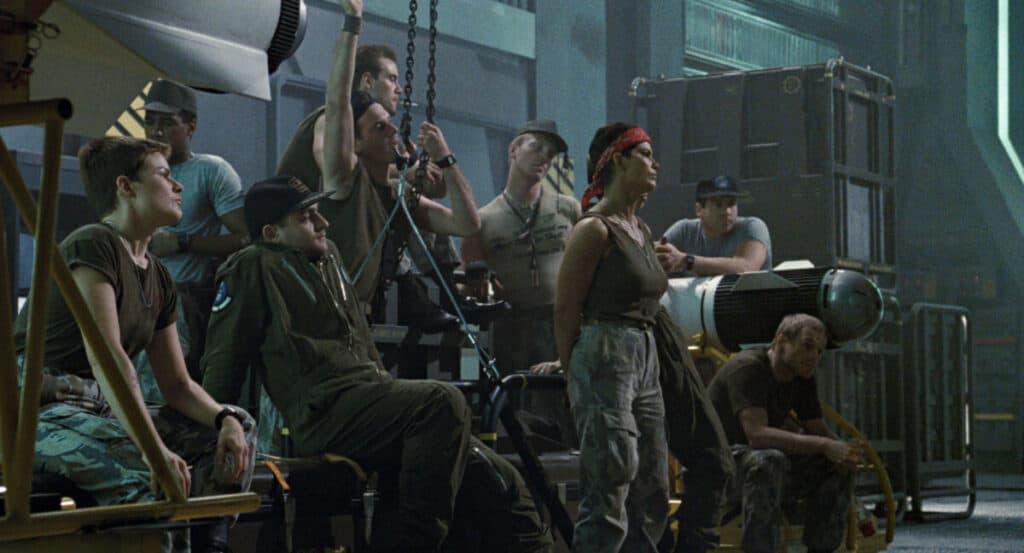
Stunts: Most skills allow you to get a +1 die on your next check with the same skill check. You might be able to do it quietly or with extra craftsmanship. Or if you have to take the exact same action twice in a row, you can automatically succeed on the next attempt.
New skills can be learned and existing skills can be increased with XP and character advancement, which is covered below.
Talents
Talents are similar to Feats in Dungeons & Dragons or Pathfinder. It is something your character gets to do that is special. You do not have to roll to trigger them. Each Career has three Talents, there are also General Talents available to all characters.
For example, Colonial Marines have Banter. When resting in a safe place, Banter can let you and everyone within short range reduce 2 levels of Stress. If more than one character has this Talent, it still only works once.
Colonial Marshalls have the Authority talent, which allows them to use Command instead of Manipulation to “bend someone to their will.” Medics have Field Surgeon, which gives them a +2 to their dice pool when treating critical injuries.
Personal Agenda
Personal Agendas are something your character wants or needs to accomplish. These Agendas may coincide with a “successful” outcome to the mission or they may not. Let’s say, hypothetically, you’ve been assigned to get a xenomorph back to Earth to study. So let’s say, for example, you trap a non-combatant advisor to your Marine Expeditionary Force in a room with a face hugger. You can then put that host in stasis for transport back to Earth.

In Cinematic Play (One-Shot), the Mother (Game Master) creates the Agenda that is connected to the scenario. Cinematic games are divided into 3 Acts and you get awarded a Story Point, if you pursued your Agenda during an Act. A Story Point can be spent to automatically add a success to a roll.
In Campaign Play, pursuing your Personal Agenda during a session will result in an additional experience point. More on Advancement soon.
Buddies and Rivals
There is not any mechanical rules assigned to the Buddy and Rival system. The idea is there is one person that you’d walk through a room full of hatching face-hugger eggs to rescue. There is another person who you would undermine and make them look bad in front of others. This is to start play with interpersonal intrigue.
In Campaign mode, the players pick their buddies and rivals. In cinematic mode, those are assigned by the Game Mother. Personally, I would likely impose +1 Stress if a character deliberately abandoned their buddy or witnessed their (often messy) death. Putting yourself in danger to rescue or help you buddy might relieve stress. Similarly, undermining your rival would relieve stress. Watching your rival get one over on you would increase your stress.
Advancement
At the end of each session, assuming any characters are alive, the group runs through a list of questions. If their character can answer yes, per question, they get one experience point. Example questions are:
- Did you participate in the game?
- Did you risk something to advance your personal agenda?
- Did you risk your life to save your Buddy PC?
- Did you stand up to your Rival PC?
- Did you make a Panic Roll?
- Did you overcome a dangerous event?
The book is clear, you only get one XP per question. The number of questions you ask is up to the Game Mother. This lets the Game Mother modulate how much XP is gained per session. For myself, I’d have a set number of around 2-3 questions each session.
To learn a new skill, you must spend 5 XP. To increase an already known skill, you must have succeeded at the skill during the prior session or be taught by an instructor for one shift, which also costs 5 XP. You can also learn a new talent for 5 XP, but it takes a day of practice a successful wits roll, once a day, until you succeed. If you have an instructor, you automatically succeed.
There is no way to increase your attributes.

Combat
Aliens Roleplaying Game uses a gridless combat system. Areas on the map are divided into zones, which can vary in size and density, but generally not more than 25 meters. Zones can have a blocked border, eliminating line of sight, or can be open. A large loading bay may be divided into two zones.
Zones will have different descriptors associated with them, along with mechanical effects. The book gives three examples, but the Game Mother is free to make their own:
- Cluttered: Roll Mobility when entering the zone, a failure means you fall down and probably cause a racket.
- Dark: Observation rolls have a 2 dice penalty. Ranged attacks also suffer a 2 dice penalty. Targets outside of the zone cannot be seen.
- Cramped: You can only Crawl, which means you can’t take a second move action in a round. Also, you cannot shoot past creatures who are next to you.
Instead of a grid, combatants are in different range categories:
- Engaged — Right next to you
- Short — A few meters away, but in the same zone
- Medium — up to 25 meters away, in an adjacent zone
- Long — Up to 100 meters away, which is about four zones
- Extreme — Up to about one kilometer
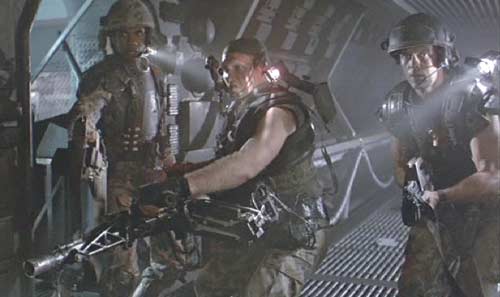
The other concept the Players and Game Mother must track is time. They are not precise measurements, but thematically appropriate:
- Round — 5-10 seconds, primarily used in combat
- Turn — 5-10 minutes, used in exploration
- Shift — 5-10 hours, used in Recovery or Repairs
Stealth Mode
Let’s be honest, if you’re playing Aliens RPG, you’ve probable watched at least one of the movies. That means you know that when you’re exploring the empty colony or spaceship, you’re going to try to be as stealthy as possible.
The Player Characters will need to roll Mobility against the Xenomorph’s Observation. If this is a group check, then its the Character with the lowest Mobility against the Xenomorph with the highest Observation. Then the reverse is true if the Xenomorphs are trying to sneak up on the Characters.
But when in Stealth Mode, the Game Mother must decide if the enemies are in Active or Passive mode. Most Xenomorphs are going to start in Passive Mode, which means they are not yet aware of the Player Character’s presence. Characters will automatically detect Passive enemies in their zone or if in a different zone, within their line of sight.
Active enemies are aware of the Character’s presence and are stalking the characters. They will try to sneak up and ambush the characters. Characters cannot spot Active enemies who choose to remain hidden/don’t attack, unless you detect them with technology or if it becomes obvious.
Motion Trackers
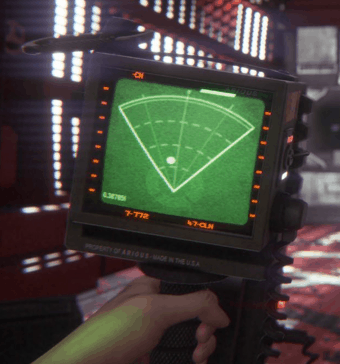
If the characters possess a motion tracker, they can use it once per Turn. Each time its used, the character must make a Power Supply Roll. The larger M314 has a Power Supply of 5, but the smaller M316, which fits atop a pulse rifle, only has a Power Supply of 3. A Power Supply Roll means you roll dice equal to its current supply rating. Each 1 rolled, drops the current Power Supply by 1 point. Indoors, they can detect movement up to 4 zones away.
Ambushes
Sometimes, Xenomorphs attack when you least expect it! This is an opposed Mobility versus Observation check to determine if the Sneak Attack is successful. The closer the range, the bigger the penalty on the Mobility check:
- Engaged Range (Close Combat): -2 Dice Penalty
- Short Range : -1 Dice Penalty
- Medium: No Penalty
- Long: +1 Dice Bonus
- Extreme: +3 Dice Bonus

An Ambush is where you’re staying put and the enemy is coming towards you. It is still an opposed Mobility versus Observation check, but there is a +2 dice pool bonus because you’re staying still. However, the range penalties or bonuses still apply.
If this is a group operation, the opposed rolls are made by the team member with the lowest Mobility dice pool against the other side’s highest Observation dice pool.
Initiative
Like Savage Worlds, initiative uses a card deck. But it’s just a deck of 10 cards, Ace through Jack of the same suit, if using a deck of playing cards. You can buy a custom deck of cards for the game, which includes gear cards, character cards, and the 10 initiative card.

Lowest number (1) goes first. Unlike Savage World, you do not redraw your initiative each turn. However, I see no reason why you cannot use that rule. Players, at the start of the Round, can exchange their initiative cards but only if they can hear each other.
Actions
Characters can perform either one slow action and one fast action or two fast actions in a round. Slow actions are listed on page 88 of the Core Rulebook. They include Crawling, any attack action, reloading your weapon. Essentially, this means doing anything that takes a little bit of time, concentration, and luck.
Fast Actions are generally movement actions, but also includes drawing a weapon, blocking a a close combat attack, shoving, aiming, and taking overwatch. Speaking of movement, Running means you are moving to a neighboring zone or between Short Range to Engaged. Crawling is the same as Running, but it is a Slow Action. If you’re prone, standing enemies get a +2 dice pool bonus to all close combat attacks against you.
When you are in Engaged Range with an enemy, you cannot simply walk away. Instead, you have to use the Fast Action Retreat or Shove before you can Run away. Closed doors and hatches require a Fast Action to open, assuming they are unlocked. Otherwise, you’re going to have to spend a Slow Action shooting it open or making a Comtech roll to hack it.
Attack Actions
When you attack, you’re either using your Close Combat skill or your Ranged Combat skill. For each skill, there are stunts you can use for each extra success you get on your roll. There are also specific reactions players can make if they reserved a Fast Action from their prior turn.
Close Combat
If you get a single success on your Close Combat check, you hit. The damage you do is based upon your weapon’s damage rating, This is mitigated by your Armor, if any: roll a number of dice equal to your armor rating. Any successes subtract one from the damage you take. However, your successes do not prevent the stunts from occurring.
The defender can use their reserved Fast Action to try and block the attack. This must be declared before the attacker rolls. To block, the Defender rolls their Close Combat skill, for each success you can choose one of the following effects:
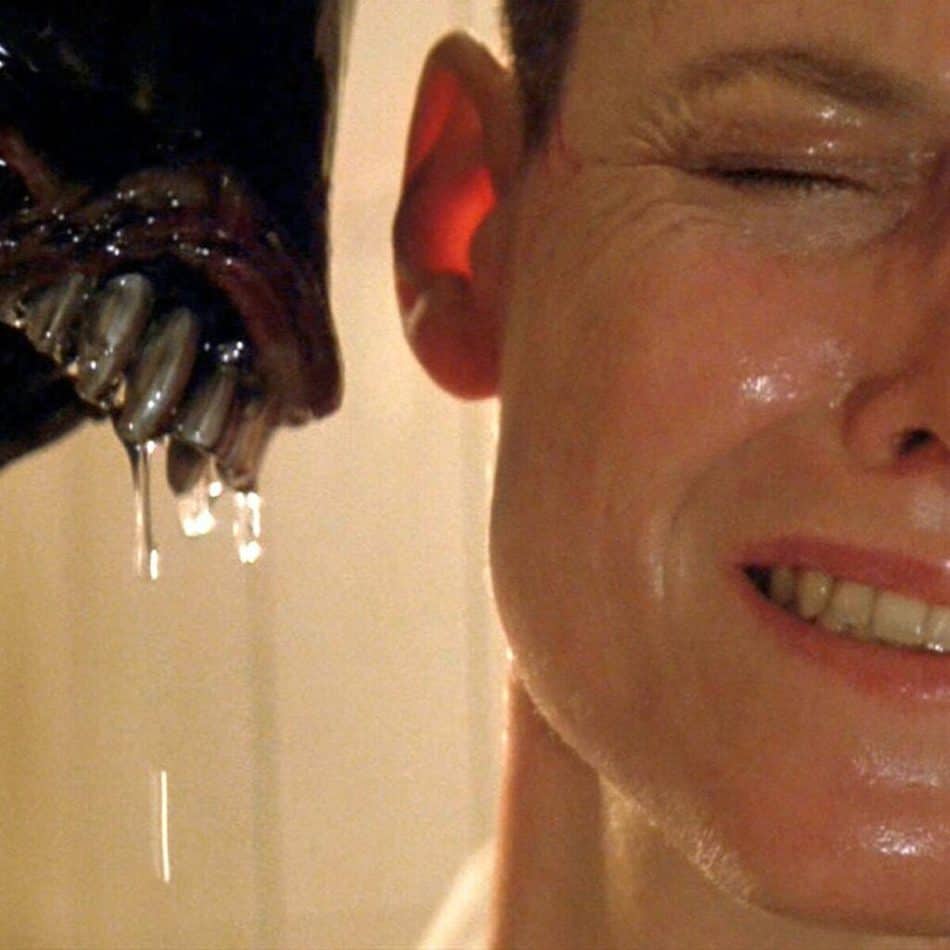
- Decrease Damage: This acts like Armor, reduce one point of damage for each success.
- Counterattack: You deal damage equal to the damage rating of your weapon. You do not get to spend additional success to increase this damage.
- Disarm: you take away your enemy’s weapon, unless it is a natural weapon of a Xenomorph.
Note, if you get enough successes you can do all three. If you are not carrying a weapon, then you can only block attacks from other humans. If a Xenomorph is attacking you, then you need to be wielding a sturdy weapon or tool.
The Core Rulebook suggests the following stunts attackers can do if they get extra successes:
- Inflict additional damage.
- Trade your initiative card with the defender.
- Disarm or knock free an object the defender has on them.
- Knock your opponent prone, which does not work against Xenomorphs
- Pin your enemy in a tight clinch, which does not work against Xenomorphs
Grappling
If you choose the grapple stunt, then you both fall prone and your defender drops any weapon being held. The defender can only use a Close Combat roll to break free on their turn. The attacker, on their subsequent turns, can make an unarmed attack as a fast action, which cannot be blocked.
An unarmed attack only does 1 damage. If the defender is wearing armor, then they roll twice their armor rating to reduce damage.
Ranged Combat
Most combat by PCs will be ranged combat. Getting up close and personal with a Xenomorph does not promote a long life. Shooting a firearm is a Slow Action. At its most basic, make a Ranged Combat roll and see if you get a success. However there are a lot of modifiers.
Firing at large objections, like vehicles or a Queen, gives a +2 dice pool bonus. Shooting at smaller targets like a hand-held item, a face hugger, or chestburster is at a -2. This is further modified by Range and lighting conditions. But Aiming, which is a Fast Action, provides +2 dice pool bonus, provided your very next action is shooting (even on your next turn, unless you’re injured). The table of modifications is at page 95 of the Core Rulebook.
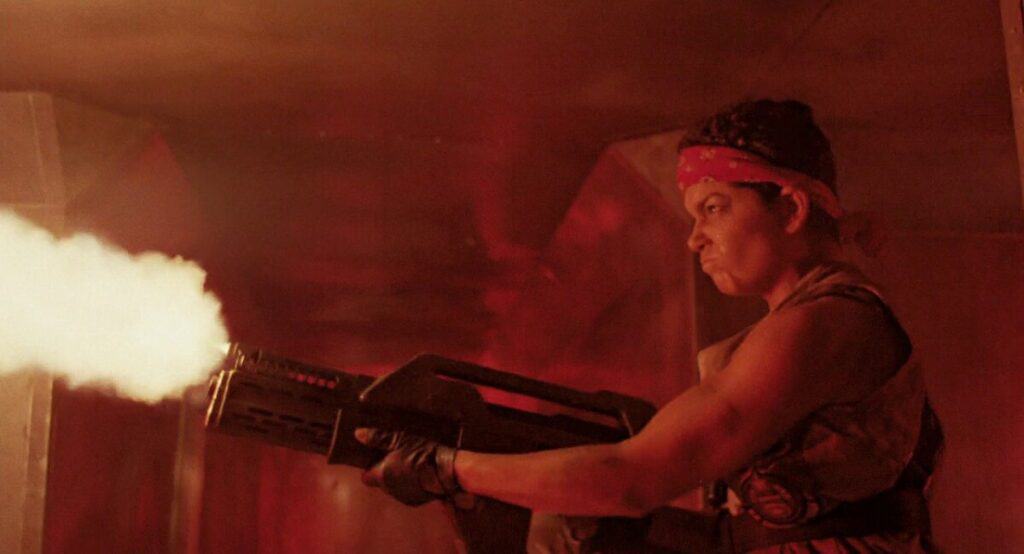
As with Close Combat, extra successes allows you to perform additional Stunts:
- Inflict additional damage.
- Pin down the enemy. NPCs miss their next slow action, PCs must make a panic roll.
- Trade initiative cards with your target.
- Target drops something they are holding
- Opponent is knocked prone or pushed backwards (let’s say through an airlock).
Full Automatic Fire
Some weapons have the special property that allows for full automatic fire. This increases your dice pool by 2, if you use it. But you immediately add a stress level, that is included in your roll. Getting more than 1 success allows you to distribute the weapons’ damage rating to additional targets within short range. Additional successes can be used as stunts against the primary or secondary targets.
Ammunition
Most ranged weapons have an ammo rating. This is the number of reloads or new magazines it comes with. Rather then counting individual bullets, the game uses the Stress Dice to determine when you run out of ammunition. When you fire a weapon and any of the Stress Dice show a 1, you have emptied your magazine. In addition, you must also make a Panic Roll. Reloading costs a Slow Action.
Cover
Taking cover is a Fast Action. It provides you an armor rating, depending on what you’re hiding behind. Shrubbery has an Armor Rating of 2. A door is a 4. An inner bulkhead is a 5. In short, it doesn’t make it harder to hit you, but allows you to resist damage.
Overwatch
With a Fast Action, you can take an Overwatch position in a zone, looking in a specific direction, with a ranged weapon. If any enemies are within Engaged range of you, then you cannot take an Overwatch position. If you see a target in the direction you’re looking, you can fire at it, so long as you saved your Slow Action. Your shot is resolved before the enemy acts. You can only shot once before your next turn.
You lose your overwatch if you are injured or attacked in close combat.
Damage
Your character’s starting health is their Strength score. This means your maximum health is 5. Weapons have the following Damage Ratings:
- Pistols: 1-3
- Rifles: 1-4
- Heavy Weapons: 2-4 (Grenade Launcher has a Blast 9)
Needless to say, combat in this game is lethal. Once you drop to zero Health, you are Broken and must roll for a critical injury. For a critical injury, roll a regular and a stress dice. Do not add the numbers, but count them as a two-digit number. Snake Eyes is an 11; Double Boxcars is 66. Critical Injuries range from Winded (non-fatal), to gouged eye, leg artery cut (death in one turn).

If no one comes to your aid, then you must make a Death Roll, which is your Stamina. Failure means death. Success means you linger on, making a new roll once time has passed.
Another character can use their Medical Aid skill as a Slow Action, that gets you back up. Your Health is equal to the number of successes. However, any penalties associated with your critical injury remain. Each type of injury has a healing time listed on the table on page 100. A successful Medical Aid check on each day will cut the recovery time by half.
Coup De Grace
You can kill any Broken character. But if its a human being, then you must first fail an Empathy roll (no Stress Dice). Regardless of whether you succeed or fail at your Empathy roll, you gain one Stress Level. The Merciless Talent allows you to kill defenseless enemies without repercussion.
Miscellaneous Items
The Aliens Roleplaying Game has a lot of other sections that include rules for environmental hazards, vehicle combat, and gear. The Game Mother section provides helpful tips on how to run Campaigns. Finally, there are game world sections on the Aliens universe, governments, corporations, and planetary systems.
Final Thoughts
I really like this game and system. It is very evocative and gets the tone right for an Aliens RPG. Death always feels imminent and the setting is tense. The dice pool mechanic, with limited skills and attributes, with a 10-die cap (not counting stress dice) keeps things simple. It also means, in campaign play, its quick to reroll a new character.
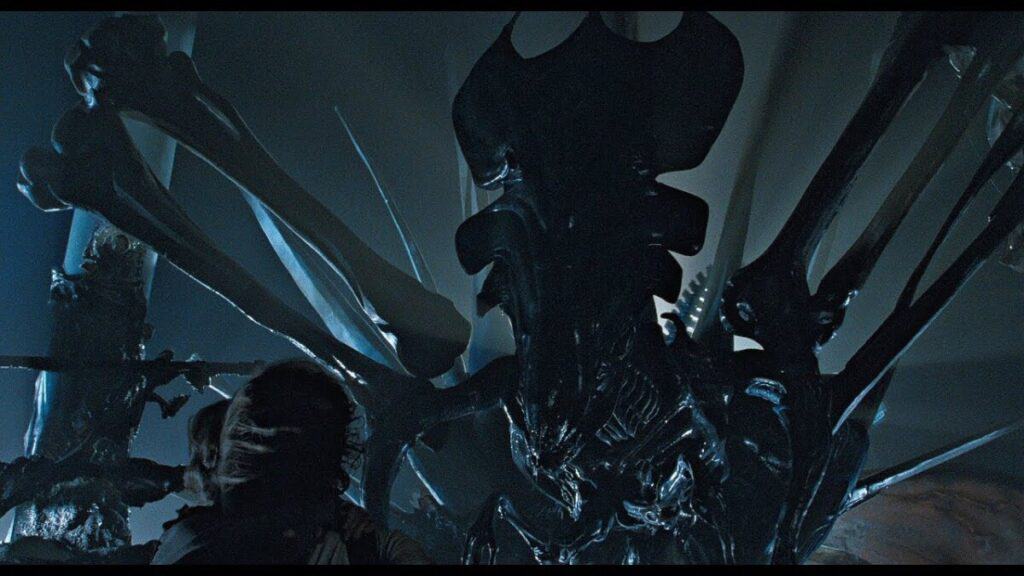
While these statements are all true for Cinematic play (one shots), they feel a lot less true in Campaign play. In Cinematic play, the point of the story is encountering and surviving the Xenomorphs. You know exactly what’s going to happen, just not how.
But what is the point of Campaign play? Space Piracy or Long-Haul Space Trucking? Maybe you can have some corporate infighting with some interpersonal tensions on the ship with the Buddies and Rivals system. But the Xenomorphs become the spice to your dish. They are something out there that could show up at any time; but if they do show up every time……. *yawn* more screaming, yelling, running away, and dying.
I could be wrong about this. I might not have a good story line or overall plot to fit into this universe. But compared to the tension of xenomorphs showing up, isn’t every other conflict ho hum?
I am absolutely planning on running a cinematic game for a friend’s birthday.
